Real Assets in the Fight Against Inflation
Real assets are physical, tangible investments. Here are some of the most common real assets, their characteristics, and ways you can invest in them.
Presented by: Kris Maksimovich, AIF®, CRPC®, CPFA®, CRC®
Real assets are physical, tangible investments—such as real estate, precious metals, timber, and infrastructure—that historically have tended to maintain their real value independent of currency fluctuations. These types of assets are generally far upstream in a value chain and close to the primary or raw material stage. When inflation is present, the producer of a raw material typically has been able to manage inflation better than companies that are closer to consumers in the value chain. Hence, during inflationary periods, real assets can potentially serve as a source of security and a store of value at a time when many traditional equities may see their input costs rise and their margins decline.
The following discussion provides descriptions of some of the most common real assets and their characteristics, as well as ways you can invest in them.
Commodities
Commodities are raw materials, such as copper or gold, which can be bought and sold. Commodities can function as an inflation hedge and provide real return because they are a tangible asset and often priced in U.S. dollars. The risk/return profile of commodities is affected by the supply and demand dynamics of each individual commodity, as well as by U.S. dollar movements.
Commodity prices are often positively correlated with inflation because many commodities are used as inputs to produce goods and services. In addition, some commodities are components of inflation measures. For instance, the Consumer Price Index (CPI) includes the price changes of gasoline (a refined product derived from crude oil) in its computations; therefore, an increase in gasoline prices could directly contribute to an increase in inflation.
There are four precious metals that are commonly considered for investment purposes: gold, silver, platinum, and palladium. In addition to its extensive use in jewelry, gold has established itself historically as a safe haven from inflation, currency devaluation, and political and economic disruptions. As hard assets that can also protect against inflation, the remaining three precious metals are driven by industrial activity and demand. Silver, for example, has traditionally been used in photography and silverware and is now being used in applications like solar panels and TVs. Meanwhile, platinum and palladium are used in the catalytic converters of automobiles, so their price is affected by car demand.
Energy commodities can also provide investors with an inflation hedge, as these basic inputs are critical to economic activity, such as transportation and construction.
Ways to invest. Commodity mutual funds offer investors exposure to futures-based commodity indices, such as the Bloomberg Commodity Index, which is a diversified index that caps the weights for commodity subsectors, such as energy or precious metals. The Bloomberg Commodity Index is generally weighted about one-third agriculture, one-third energy, and one-third metals.
Commodity mutual funds use swaps and futures to gain commodity index exposure, with fixed income instruments as collateral. Commodity mutual funds may have difficulty tracking the spot prices of commodities (i.e., the current price at which commodities can be bought and sold at a specific time) over time because they use commodity contracts, which must be rolled forward periodically when the contracts are about to expire, creating a gain or loss in addition to the spot return. Some commodity mutual funds keep the same commodity weighting as their benchmarks, while others choose to over- or underweight certain commodities relative to the benchmark.
Unlike commodity mutual funds, natural resource mutual funds offer commodity exposure through companies (i.e., equities) that are involved in the production of commodities. This indirect exposure means that, while these funds are vulnerable to the ebbs and flows of equity markets, they are not subject to the complication of attempting to track commodity spot prices using futures, swaps, or other derivatives. Natural resource mutual funds can provide a leveraged position to the spot price of the underlying commodities. While natural resource mutual funds may not be as correlated historically to the price of the underlying commodities, they do have the ability to make managerial decisions—such as hedging, changing capital expenditure plans, and cost control—that can help mitigate a poor commodity market or enhance a good one.
Exchange-traded products exist in both futures and equity formats and, in many cases, offer more targeted strategies, including many commodity-specific options, than mutual funds. For precious metals, there are exchange-traded funds (ETFs) that buy and hold the physical metal in vaults. This type of investment gives investors results closest to the commodity’s spot return.
Commercial real estate
Commercial real estate includes the places that people sleep (apartments and hotels), work (office buildings), and shop (retail buildings), as well as the properties that support consumer-facing activities (industrial buildings and distribution centers). Only a couple of decades ago, investment in commercial real estate was restricted to a few very wealthy individuals, pension funds, endowments, and the like. Securitization has allowed investors to pool their money together to invest in properties.
Commercial real estate investment returns generally come from two main sources: income and capital appreciation. Income return is derived from the ongoing operations of the property or portfolio of properties. In most cases, the commercial property owners are collecting rents (revenue) and paying out financing and operating costs (expenses). The difference between the revenues and expenses may be passed on to the property owner in the form of an ongoing income yield.
Capital appreciation is measured as the difference between initial investment and amount returned when an investment is sold. The ultimate outcome can be affected by property-specific factors (e.g., change in the property’s occupancy rate), location factors (e.g., new supply entering the market as the result of development), and/or macroeconomic factors (e.g., market capitalization rate changes due to a perceived change in the risk environment).
Real estate has tended to be cyclical, but many view commercial real estate as an inflation hedge due to a number of factors:
- As the price of goods and services rises, so may the rental rates that property owners can charge tenants.
- Replacement cost is a significant factor in determining when new development occurs. As construction and material costs increase due to inflation, existing properties may also rise in value before additional competitive supply is added to the market.
- Due to commercial real estate’s high percentage of capital or fixed assets, inflationary pressures (which tend to affect variable inputs like labor costs) tend to have a limited effect on the expense side of a real estate portfolio’s income statement.
Like most investments, there are a number of nuances that affect the risk/return profile of a commercial real estate investment. Location, lease structure, tenant quality, and financing strategy are just some of these factors. In order to reflect risk levels, commercial real estate investments are often grouped in one of four categories:
- Core properties tend to be lower risk/return vehicles. They are characterized by low vacancy, long-term leases to creditworthy tenants, and strong locations. An investor purchases core real estate to seek income.
- Core-plus properties lie further out on the risk/return spectrum than core properties. These properties are mostly stable but have some factors that increase the property risk. An investor purchases core-plus real estate to seek income; capital appreciation is a secondary objective.
- Value-add real estate takes us one step further out on the risk/return spectrum. These properties tend to require a repositioning effort. An investor purchases value-add real estate to seek capital appreciation; income is a secondary consideration.
- Opportunistic real estate is the most aggressive of the existing property types. These properties require a major repositioning effort and may contain other extenuating circumstances. An investor purchases opportunistic real estate to seek capital appreciation.
Lease terms can also be an important factor, as lease durations vary across property types. For example, property types with shorter lease durations, such as hotels and apartments, can increase rents more frequently to keep up with inflation. On the other end of the lease duration spectrum, properties with triple-net leases tend to have more limited pricing power due to the longer-term leases.
Ways to invest. Because of the scale of the investment, commercial real estate is usually a more viable investment option for those investing in a securitized or fund format. Publicly traded real estate investment trusts (REITs), REIT ETFs, and REIT mutual funds offer investors exposure to a portfolio of properties that is typically regionally diverse and possibly sector diverse as well. These investment vehicles are transparent, liquid, and cost-effective, but they tend to be quite volatile and react to the daily emotions of the market.
Direct participation programs—nontraded REITs and real estate-focused limited partnerships—do not enjoy the liquidity of traded REITs, typically have long holding periods, and may have inefficient fee structures, but they are not subject to the daily emotion of the markets and target the payment of handsome dividends.
Infrastructure
Infrastructure refers to systems that move people and distribute critical goods, as well as to essential facilities and services. The term typically refers to the technical structures that support a society, such as roads, water supply, sewers, power grids, and telecommunications. While many of the services in this domain have long been provided by the government, public budget shortfalls and rapid expansion have opened up opportunities for private sector investment and profit.
Not all infrastructure investments share the same characteristics. Assets like toll roads, ports, and airports tend to be cyclical, while others, such as utilities, tend to offer more stable cash flows and current income. Some assets are leased under terms that allow for increases as the CPI rises. This feature, in addition to their quality as a hard asset, can potentially provide investors with protection against measured inflation.
Ways to invest. Infrastructure mutual funds and ETFs provide exposure to a global universe of publicly traded infrastructure companies that own, operate, and develop infrastructure assets.
Timberland
Timberland investing refers to ownership of land with harvestable lumber, taking the form of tree farms or managed natural forests. Timber provides investors with income when trees are harvested and sold and with potential capital appreciation as the value of the land increases. Timber value depends, to a certain extent, on the demand for wood, which, in turn, is driven by measures like new home construction. One advantage of timber is that trees grow naturally and require little maintenance, so owners can choose the optimal time to harvest and sell. The trees and land provide a natural hedge against inflation. Timberland owners also have the option to develop or repurpose land if doing so will increase the value.
Ways to invest. Timber REITs provide exposure to the ownership and management of timberlands. A portion of some timber REITs’ revenues, however, may be based on downstream activities, such as wood and paper processing and production.
In summary
Real assets run the gamut from naturally occurring resources, to items that are grown and harvested, to structures and land. The common element that links them is their potential ability to offset some of the effects of inflation. In general, a hard asset will maintain its intrinsic, real value in the face of increasing currency supplies and potential devaluations, thus preserving investors’ purchasing power.
If you are interested in further exploring the world of real assets, please contact our office, and we will help you determine their role in your portfolio.
Disclosure: Certain sections of this commentary contain forward-looking statements that are based on our reasonable expectations, estimates, projections, and assumptions. Forward-looking statements are not guarantees of future performance and involve certain risks and uncertainties, which are difficult to predict. Past performance is not indicative of future results.
Investing in natural resources investments can be riskier than other types of investment activities because of a range of factors, including price fluctuation caused by real and perceived inflationary trends and political developments and the cost assumed by companies in complying with environmental, political, and safety regulations. Investing in physical commodities, such as gold, exposes these funds to other risk considerations such as potentially severe price fluctuations over short periods of time. These funds use investment techniques with unique risks, such as merger arbitrage risks, high portfolio turnover risks, options risks, borrowing risks, short sale risks, nondiversification risks, liquidity risks, and foreign investment risks, which may increase volatility and may increase costs and lower performance. There is no assurance that these funds or any investment will achieve their investment objectives.
All indices are unmanaged and investors cannot invest directly in an index. The Consumer Price Index (CPI) is an index estimating the average price of consumer goods and services purchased by households, as measured by the price change for a constant market basket of goods and services from one period to the next within the same area. The Producer Price Index (PPI) measures the average change over time in the selling prices received by domestic producers for their output. The NCREIF Timberland Index and the NCREIF Property Index are quarterly time series composite return measures of investment performance of a large pool of individual timber properties and a very large pool of individual commercial real estate properties, respectively, acquired in the private market for investment purposes only. The S&P 500 Index is a broad-based measurement of changes in stock market conditions based on the average performance of 500 widely held common stocks. The Henry Hub Natural Gas Price is the pricing point for natural gas futures contracts traded on the New York Mercantile Exchange (NYMEX). West Texas Intermediate (WTI Crude Oil) is a type of crude oil used as a benchmark in oil pricing and the underlying commodity of NYMEX’s oil futures contracts. The FTSE NAREIT U.S. Equity REIT Index measures the performance of all publicly traded equity real estate investment trusts traded on U.S. exchanges. The Silver London AM/PM Fix is considered the main reference price for silver and is the price most often used in contracts. The Gold London PM Fix is considered the main reference price for gold and is the price most often used in contracts. The Barclays Capital Aggregate Bond Index is a market value-weighted index representing securities that are SEC-registered, taxable, and dollar-denominated; it covers the U.S. investment-grade fixed-rate bond market, with index components for a combination of the Barclays Capital government and corporate securities, mortgage-backed pass-through securities, and asset-backed securities. The GDP price deflator is a measure of the level of prices of all new, domestically produced, final goods and services in an economy. The Bloomberg Commodity Index and subindices are composed of futures contracts on physical commodities commonly used to measure the price of commodities. The S&P GSCI serves as a benchmark for investment in the commodity markets and as a measure of commodity performance over time.
Investors should consider the investment objectives, risks, and charges and expenses of the investment company carefully before investing. The prospectus contains this and other information about the investment company. You can obtain a prospectus from your financial representative. Read the prospectus carefully before investing.
Kris Maksimovich is a financial advisor located at Global Wealth Advisors 4400 State Hwy 121, Ste. 200, Lewisville, TX 75056. He offers securities and advisory services as an Investment Adviser Representative of Commonwealth Financial Network®, Member FINRA/SIPC, a Registered Investment Adviser. Financial planning services offered through Global Wealth Advisors are separate and unrelated to Commonwealth. He can be reached at (972) 930-1238 or at info@gwadvisors.net.
© 2025 Commonwealth Financial Network®
Latest News
How much does college really cost?
April 2, 2025
How Much Does Your Bracket Pick Really Cost? We hope you're just as excited as we were for this year’s March Madness Tournament and finally getting down to F...
READ MORE...Big News for Retirees: Social Security Fairness Act Repeals WEP and GPO
March 27, 2025
If you or your spouse have worked in both the public and private sectors—or if you’re currently drawing a government pension—there’s important news that...
READ MORE...Managing Taxes on Your Investments
February 19, 2025
Presented by Scott Portlock CFP®, CLU® When it comes to your money, it’s not what you earn, it’s what you keep. Here are some ideas that may help le...
READ MORE...Loading...






